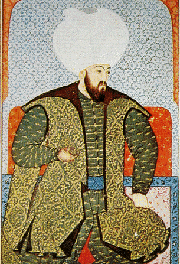What does Sephardi Mean? Who Are the Sephardim??
|
Webster's Dictionary Defines Sephardi as:
|
|
Main Entry: Se·phar·di - Se·phar·dic
/-'fär-dik/ adjective |
Who are the Sephardim?
Sephardic has come to mean almost any Jew who is not Ashkenazi, however this is erroneous. Although there are wide cultural divergences within the Sephardic world, common liturgy and religious customs constitute underlying factors of unity. The academic term is that Sephardim are the Jews from Iberia (Spain and Portugal). The plural term is Sephardim; the singular is "Sephardi." The Hebrew "Sephardi" or "Sepharadi" refers either to a single Iberian Jew.
Where does the name originate from?
A location named "Sepharad" is mentioned in the Tanakh (Bible) in the book of Obadiah, where the prophet refers to the Jerusalemite exiles in Sepharad. There is no scholarly concensus as to the geographical location to which this passage originally referred. Some scholars have suggested locations in Mesopotamia, Sardis in Asia Minor, or Sparta in Greece. From late Roman times, some Jews assumed that Sepharad referred to Spain. In any case, this was but one instance of the transference of biblical terms such as Sepharad, Tzarefat and Ashkenaz from their original Middle-Eastern referents to European locales. By the Middle Ages, Sepharad was the normal term used by Jews to refer to Spain.
Judaism in Spain
According to Sephardic tradition, the first Jews to arrive in Spain were the exiles from Jerusalem to whom Obadiah referred, who came in the sixth pre-Christian century. Many scholars assume Jews settled in Spain in Roman times, but we have little information about Jewish life in Spain until the time of the Visigothic Spanish kingdom, which outlawed Judaism at the end of the seventh century after the kings had become Catholics. Spain was conquered by the Muslims in 711. In the tenth and eleventh centuries, Spanish Judaism flourished under the Muslims, producing poets, scholars, and courtiers of the first order. After the Christian Reconquista gained Toledo in 1085, when the Almoravids came to rule the Islamic side of the frontier, Jewish cultural achievements in Muslim Spain began to decline, disappearing under the Almohades in the mid-twelfth century. But Christian Spain meanwhile developed its remarkable convivencia in which Jews (and Muslims) were involved in cultural, intellectual, financial and even political life all over Christian Spain. By the mid-thirteenth century, the Christians controlled all of the Peninsula except for a small area from Granada to the Mediterranean. In many of the independent Spanish kingdoms, the thirteenth and fourteenth centuries still saw striking religious, cultural and literary achievements among the Jews, but Jews also faced increasing religious pressures and occasionally were forced to participate in religious "disputations" with Christians.
Violent anti-Jewish riots broke out in several cities in 1391, causeing many to flee, and leaving thousands of Spanish Jews dead. The fifteenth century was marked by continuing hardships and religious pressure, leading many Jews to convert or to leave Spain. In January, 1492, the Muslims were driven out of their last stronghold, Granada, completing the Reconquista.
In March, 1492, King Ferdinand and Queen Isabella decreed the expulsion of the Jews from Spain. Many Jews converted or left the Iberian peninsula; other Jews went to Portugal, where Judaism could still be practiced freely. But Portugal expelled its Jews in 1497, and the tiny kingdom of Navarre followed suit in 1498.
Judaism could be practiced openly nowhere in the Peninsula. The exact number of Jews who left Spain and Portugal at the end of the fifteenth century is debated by scholars, but may be estimated at several hundred thousand, significant enough to enable Sephardim to establish their own congregations in such places as Morocco, Italy, Egypt, the Ottoman Empire, the Land of Israel, and elsewhere.
Eventually, Sephardic communities were established in Amsterdam, London and the New World as well. In many places the Sephardim, with their energy, resources, training and vitality, quickly took a leading role in local Jewish cultural and religious life.
Sultan Bayazid II 8th Ruler of the Ottoman Empire 1447-1512
Life after the 15th century Diaspora.
Today, Jews descended from the communities where Spanish Jews settled are called Sepharadim. Indeed, the term "Sephardic Jews" is often used by extension to refer to all Jews who are not part of the Ashkenazi (Central and Eastern-European) culture-world. Although some Jews of Spanish heritage resent this loose usage, it reflects the success of Sephardic religious traditions, language and customs in many of the places in which the exiles settled. The "Sephardic Rite" is sometimes used to refer not to the prayer ritual of the Sepharadim but of Rabbi Isaac Luria (d. 1573), an Ashkenazi (!) who combined elements of both Sephardic and Ashkenazic ritual. This prayerbook was adopted by the Hasidim in Eastern Europe and is probably the most common one in use in Israel today.
Forced Baptized Jews
Many Spanish Jews converted to Catholicism in the late fourteenth and fifteenth centuries, especially in the aftermath of the Edict of Expulsion in 1492. These "conversos," often called "New Christians," included many who became devout, believing Catholics, or at any rate educated their children to be. Others, however, preserved Jewish practices and did their utmost to retain some sort of Jewish identity. Most knew little or nothing about the Jewish religion and beliefs of their ancestors; some may have developed an interest in Judaism only after threatened by or actually charged by the Inquisition. Scholars debate the percentage of New Christians who were loyal to Judaism; some believe it was very low. Nevertheless, a steady stream of conversos and their descendants returned to the open practice of Judaism throughout the sixteenth and seventeenth centuries, and even afterward; often their communities were called "Spanish-Portuguese." Conversos or their descendants who were believed to continue Jewish practices or to hold Jewish beliefs were called "Marranos," a derogatory term meaning "swine."
Though
scattered, the Sephardim still thrive in the world today.
Through the Internet we are again all linked in a virtual Kahal (Community)...



